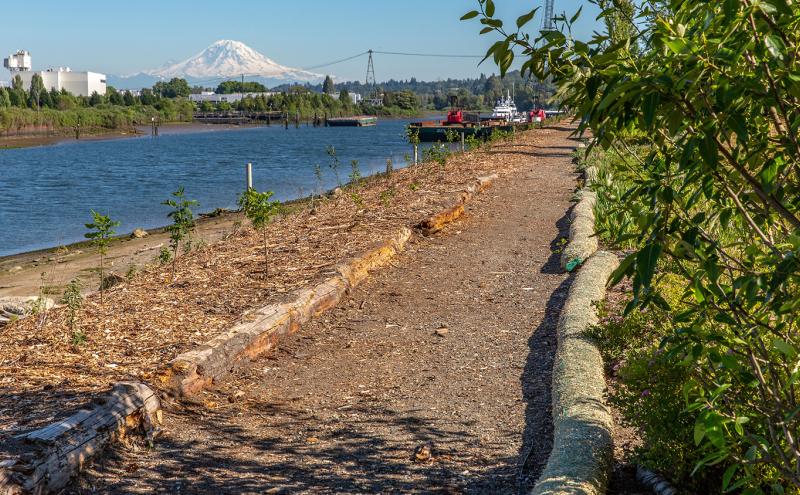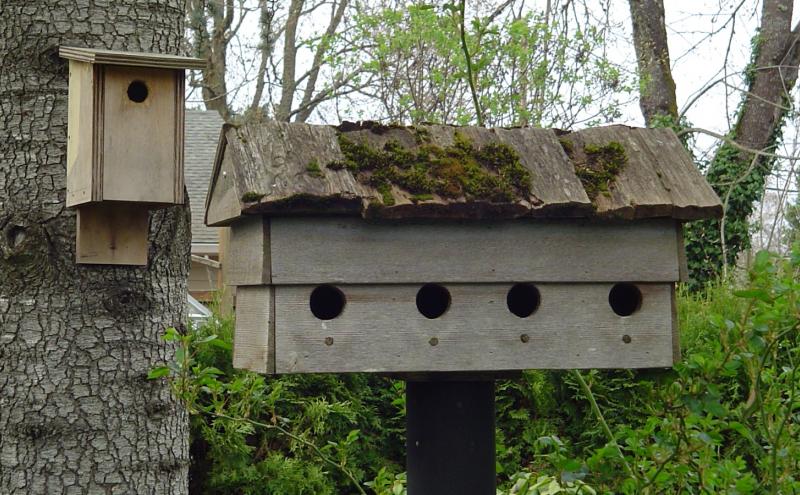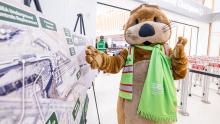
By Monica Chiang, Port Environmental Intern
My journey with the Port of Seattle began on a sunny Tuesday in July last year when I first stepped into Port headquarters at Pier 69. As a Real Estate Green Lease Intern, I was fortunate to join and be part of the Portfolio and Asset Management team as well as the Maritime Environment and Sustainability team. The responsibilities of this position align seamlessly with my academic background — I recently graduated from the University of Washington with dual degrees in Architecture and Real Estate with a special focus on sustainability.
Green leasing is a key strategy for the Port of Seattle to reduce its environmental impact and achieve its sustainability goals. A green lease is a rental agreement between the Port and a tenant that includes environmentally sustainable elements. Some elements may involve water conservation, emission reductions, energy conservation, stormwater management, sustainable materials use, data reporting requirements, and many others depending on the lease type or opportunity.
Moving forward with green leasing
In 2021, the Port initiated the first phase of implementing green leasing. Staff defined what green leasing means for its diverse portfolio of properties and tenants, and established the foundation, the scope of work, and the responsibilities for implementing it. The Port also developed and incorporated its first version of the green clauses, which align tenant environmental obligations with regulatory requirements into lease templates, covering three main areas: utilities, environmental standards, and sustainability. These provisions have already been applied to dozens of lease agreements for the Port’s waterfront properties, creating a positive momentum for cooperative efforts with the Port’s tenants on sustainable operations and maintenance.
In summer 2023, the Port embarked on the next phase of its Green Leasing initiative, building on the success of the first phase. The main goals of this next stage are to:
- strengthen the green language in lease agreements and increase accountability,
- develop a comprehensive list of sustainable practices for different use types, and
- update environmentally-friendly lease provisions to better suit the Port’s diverse properties
To achieve these goals, the Port is working on developing minimum building performance standards and required green practices that prioritize greenhouse gas emissions reduction and energy conservation goals. These include (but are not limited to): minimum HVAC efficiency, required high-efficiency lighting, renewable energy purchase, and water conservation elements. These green practices not only help the Port and its tenants reduce their environmental footprint, but also lower their operating expenses and increase their asset value, creating a win-win situation for both parties. While trying to strengthen its green language and expand green actions, the Port also considers the market competitiveness and the feasibility of its requirements and strives to determine the most relevant and suitable best practices for each space use type.
Commitment and collaboration
During this time, my job duties are wide-ranging: they include conducting research, writing business reports, analyzing and interpreting utility and leasing data, preparing presentations, identifying opportunities, providing recommendations, and drafting lease language. Some of my research topics include sustainable office operation, COVID health risks and HVAC efficiency, water conservation best practices, sustainable transportation, renewable energy options, and green building certification. This diversity keeps my role challenging and exciting every day.
After three months of hard work, we have successfully identified key focuses for the Green Leasing initiative, including identifying sustainable best practices to adopt, prioritizing elements based on greenhouse gas and energy reduction goals, and categorizing improvements by property type and use. We developed tools to further help Property Managers to better navigate the recommended green practices for implementation in different circumstances based on the change in lease term and lease use types. The Port is now expected to finalize the new green leasing template by the end of this year after coordinating with several different teams across the Maritime sector.
Green Leasing should not be viewed as a one-time effort, but rather as a long-term plan that requires ongoing commitment and collaboration. To me, a crucial aspect regarding the next steps of this plan involves keeping a close working relationship with our tenants and requires continuous transparent communication. We must also effectively leverage the tools at our disposal to ensure the successful execution of this plan. This includes identifying innovative ways to monitor the actual performance of our tenants in real-time, thereby allowing us to assess the effectiveness of our green initiatives. Moreover, it is essential to keep abreast of changes in codes and regulations, as well as shifts in our environmental objectives. This will enable us to continually update and refine the language of our green clauses, ensuring they remain relevant and effective in driving sustainable practices.
Overall, my internship at the Port of Seattle has been a remarkable journey that has allowed me to apply my academic knowledge in real-world scenarios. The diverse responsibilities and the opportunity to work with two teams have broadened my perspective and enriched my professional growth in the fields of built environment and sustainability. The supportive work environment and the chance to network with professionals have also been invaluable. All the experiences I gained from this internship ultimately equipped me with the necessary skills to move a big step forward on my career journey. I am grateful for this experience and look forward to leveraging these learnings in my future endeavors!






